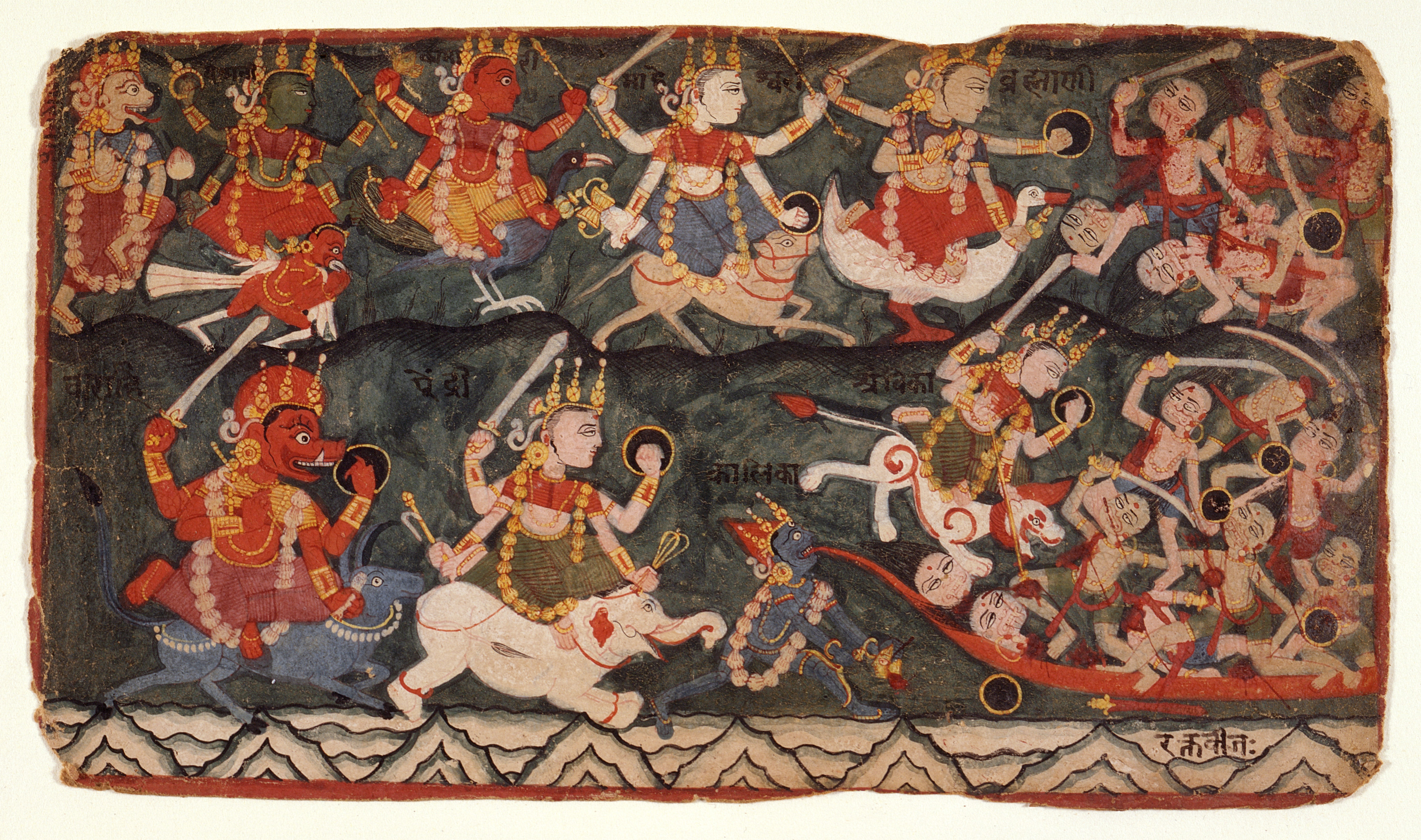|
God In Sikhism
In Sikhism, God is conceived as the Oneness that permeates the entirety of creation and beyond. It abides within all of creation as symbolized by the symbol Ik Onkar. The One is indescribable yet knowable and perceivable to anyone who surrenders their egoism and meditates upon that Oneness. The Sikh gurus have described God in numerous ways in their hymns included in the Guru Granth Sahib, the holy scripture of Sikhism, but the oneness of formless God is consistently emphasized throughout. God is described in the Mul Mantar (lit. the Prime Utterance), the first passage in the Guru Granth Sahib: General conceptions Monotheism Sikhi is Monotheistic and believes that there is only One God. Guru Nanak, the founder of Sikhi strongly denounces any type of ''Pakhand'' (hypocrisy or duality). Nanak prefixed the numeral "IK" (one) to the syllable Onkar to stress the idea of God's oneness; that the Creator, Preserver, and Destroyer is One. Sikh thought begins with the One Almigh ... [...More Info...] [...Related Items...] OR: [Wikipedia] [Google] [Baidu] |
Sikhism
Sikhism (), also known as Sikhi ( pa, ਸਿੱਖੀ ', , from pa, ਸਿੱਖ, lit=disciple', 'seeker', or 'learner, translit= Sikh, label=none),''Sikhism'' (commonly known as ''Sikhī'') originated from the word ''Sikh'', which comes from the Sanskrit root ' meaning "disciple", or ' meaning "instruction". Singh, Khushwant. 2006. ''The Illustrated History of the Sikhs''. Oxford University Press. . p. 15.Kosh, Gur Shabad Ratnakar Mahan. https://web.archive.org/web/20050318143533/http://www.ik13.com/online_library.htm is an Indian religion that originated in the Punjab region of the Indian subcontinent,"Hinduism, Buddhism, Jainism and Sikh originated in India." around the end of the 15th century CE. It is the most recently founded major organized faith and stands at fifth-largest worldwide, with about 25–30 million adherents (known as Sikhs) .McLeod, William Hewat. 2019 998 Sikhism developed from the spiritual teachings of Guru Nanak (1469–1539), the faith's first ... [...More Info...] [...Related Items...] OR: [Wikipedia] [Google] [Baidu] |
Puranas
Purana (; sa, , '; literally meaning "ancient, old"Merriam-Webster's Encyclopedia of Literature (1995 Edition), Article on Puranas, , page 915) is a vast genre of Indian literature about a wide range of topics, particularly about legends and other traditional lore. The Puranas are known for the intricate layers of symbolism depicted within their stories. Composed originally in Sanskrit and in other Indian languages,John Cort (1993), Purana Perennis: Reciprocity and Transformation in Hindu and Jaina Texts (Editor: Wendy Doniger), State University of New York Press, , pages 185-204 several of these texts are named after major Hindu gods such as Vishnu, Shiva, Brahma, and Adi Shakti. The Puranic genre of literature is found in both Hinduism and Jainism. The Puranic literature is encyclopedic, and it includes diverse topics such as cosmogony, cosmology, genealogies of gods, goddesses, kings, heroes, sages, and demigods, folk tales, pilgrimages, temples, medicine, astronomy ... [...More Info...] [...Related Items...] OR: [Wikipedia] [Google] [Baidu] |
Dasam Granth
The ''Dasam Granth'' (Gurmukhi: ਦਸਮ ਗ੍ਰੰਥ ''dasama gratha'') is a collection of various manuscripts in Sikhism containing compositions attributed to Guru Gobind Singh.Dasam Granth Encyclopædia Britannica, pages 2, 67 Guru Gobind Singh ordained the sacred text as his successor, eternally ending the line of human Gurus. It is the primary holy scripture of the Sikhs and regarded by Sikhs as the living embodiment of Ten Gurus. is a part of ("Dasam Granth") compos ... [...More Info...] [...Related Items...] OR: [Wikipedia] [Google] [Baidu] |
Sant Bhasha ), Sindhi, and Sant Bhasha (ਸੰਤ-ਭਾਸ਼ਾ ; ''Sant Bhāṣā'') is a language composed of vocabulary common to northern Indian languages, which was extensively used by saints and poets to compose religious verses. It can be understood by readers with a background in either Punjabi, Hindi-Urdu and its dialects. Sant Bhasha is most prominently used in the central Sikh scripture, the Guru Granth Sahib. The languages used include Punjabi, Lahnda, regional Prakrits, Apabhramsa, Sanskrit, Hindi languages ( Brajbhasha, Awadhi, Hindustani, Bhojpuri Bhojpuri (;Bhojpuri entry, Oxford Dictionaries , Oxford U ... [...More Info...] [...Related Items...] OR: [Wikipedia] [Google] [Baidu] |
Nirguna
''Para Brahman'' ( sa, परब्रह्म, translit=parabrahma, translit-std=IAST) in Hindu philosophy is the "Supreme Brahman" that which is beyond all descriptions and conceptualisations. It is described as the formless (in the sense that it is devoid of Maya) that eternally pervades everything, everywhere in the universe and whatever is beyond. Param Brahma is conceptualised in diverse ways. In the Advaita Vedanta tradition, the Param Brahma is a synonym of ''nirguna brahman'', i.e., the attribute-less Absolute. Conversely, in Dvaita Vedanta and Vishistadvaita Vedanta traditions, the Param Brahma is defined as '' saguna brahman'', i.e., the Absolute with attributes. In Vaishnavism, Shaivism and Shaktism, Vishnu, Shiva and Adi Shakti respectively are Param Brahma. Mahaganapati is considered as Param Brahma by the Ganapatya sect. Kartikeya is considered as Param Brahma by the Kartikeya sect. Etymology ''Para'' is a Sanskrit word that means "higher" in some contexts, a ... [...More Info...] [...Related Items...] OR: [Wikipedia] [Google] [Baidu] |
Immanence The doctrine or theory of immanence holds that the divine encompasses or is manifested in the material world. It is held by some philosophical and metaphysical theories of divine presence. Immanence is usually applied in monotheistic, pantheistic, pandeistic, or panentheistic faiths to suggest that the spiritual world permeates the mundane. It is often contrasted with theories of transcendence, in which the divine is seen to be outside the material world. Major faiths commonly devote significant philosophical efforts to explaining the relationship between immanence and transcendence but do so in different ways, such as: * casting immanence as a characteristic of a transcendent God (common in Abrahamic religions), * subsuming immanent personal gods in a greater transcendent being (such as with Brahman in Hinduism), or * approaching the question of transcendence as something which can only be answered through an appraisal of immanence. Western Esotericism Another meaning of ... [...More Info...] [...Related Items...] |


.jpg)